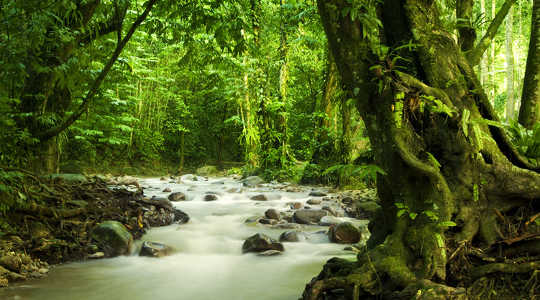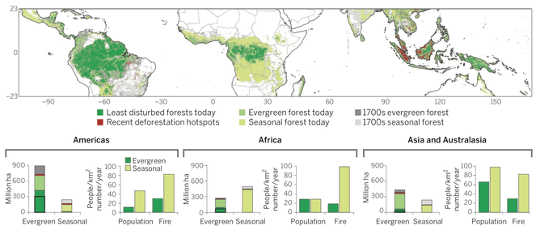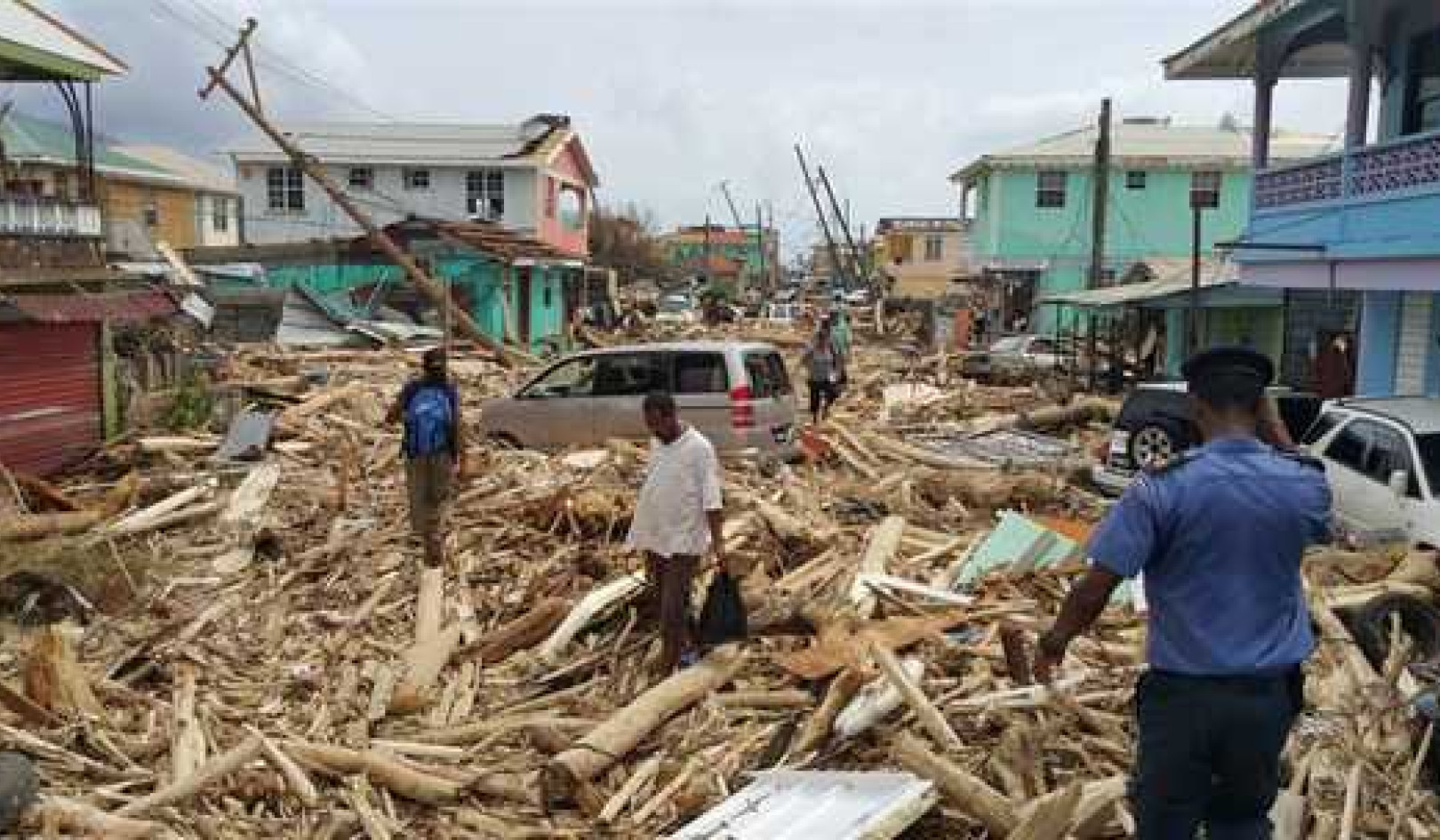
By the end of the century, the world’s remaining tropical forests will be left in a fragmented, simplified, and degraded state. No patch will remain untouched – most remnants will be overrun by species that disperse well, which often means “weedy” plants like fast-growing pioneer trees and small rodents that thrive in disturbed areas. Most of the rest will be “the living dead” – tiny remnant populations of plants and animals hanging on with no future.
There is no cast-iron law that dictates this scenario – but it appears likely unless we see a series of major policy changes. What could unfold? In research published in the journal Science, colleagues and I outline an all too common chain of events.
The first cut of timber from any natural forest is the most lucrative. The most remote places, in the interior of Amazonia, in central Congo and the heart of Borneo are all coveted by industrial loggers. The logging frontier marches relentlessly on. They selectively take the biggest trees and along with them the habitat of species that rely them.
Today, less than 25% of tropical forests have escaped industrial logging and each year new concessions are given to industrial loggers in forests that had hitherto never been logged. While parts of the forest remain following logging, truly intact tropical forests may soon become a thing of the past.
Logging pushes roads into the forest. It’s estimated that an astonishing 25m kilometres of road will be built in the tropics by 2050. Roads begin to isolate fragments of forest, and some ground-dwelling specialist species fail to cross even small openings.
Roads also bring hunters and markets together: in the decade to 2011 some 62% of Africa’s forest elephants were killed for their tusks. Usually international logging companies cut first, for export, and then they sell on their concession. This encourages a second cut of less desirable timber species, without waiting for the forest to recover, and further degradation ensues. This degraded forest is more susceptible to forest fires which kill trees and drive out many species.
 Map of current and historical evergreen and seasonal tropical forest extent. Lewis et al Heavily logged and degraded forest is then often slated for conversion to agricultural plantations. About 100m hectares of tropical forest – four times the size of the UK – has been converted over the past 30 years. Ominously, the palm oil industry which devastated much of Indonesia’s and Malaysia’s forests is now moving into Africa, which up to now has had relatively low deforestation rates. With food demand set to double, this pressure on tropical forests will intensify. Much more forest looks set to be lost.
Map of current and historical evergreen and seasonal tropical forest extent. Lewis et al Heavily logged and degraded forest is then often slated for conversion to agricultural plantations. About 100m hectares of tropical forest – four times the size of the UK – has been converted over the past 30 years. Ominously, the palm oil industry which devastated much of Indonesia’s and Malaysia’s forests is now moving into Africa, which up to now has had relatively low deforestation rates. With food demand set to double, this pressure on tropical forests will intensify. Much more forest looks set to be lost.
The remaining forest is fragmented and surrounded by other agriculture. The trend is towards small patches of isolated, fire-impacted, logged-over forests, with no large animals due to overhunting.
Now add a new pressure to this process: climate change. On the positive side, more carbon dioxide in the atmosphere increases tree growth and their resilience to drought. Yet, on current emissions scenarios, tropical forests are set to warm by about 4? this century.
With hotter temperatures and increased frequency of the most extreme El Niño events that cause droughts, huge forest fires would rage, turning even areas that escape conversion to agriculture into savanna-type vegetation rather than tropical forest.
As the climate rapidly changes, plants and animals will need to move to continue to live within their ecological tolerances – one study calculated they would need to keep moving 300 metres each year through this century to keep in the current temperature they live in.
How are organisms supposed to move through fragmented, isolated and degraded forest patches? Climate change and forest fragmentation together is a recipe for the mass extinction of tropical forest species this century.
Two Ways We Can Help
How might such a fate be avoided? Aside from a rapid global shift to low-carbon energy, two changes of policy direction would help. First, given widespread poverty in tropical forest regions, policies that enourage “development without destruction” are needed to increase prosperity without undermining the forest and the services it provides. Unfortunately, most of the benefits from logging, mining and intensive agriculture flow away from local people. Giving forest-dwellers long-term collective legal rights over their land would mean benefits flow to them.
Importantly, studies show local people with legally recognised land rights preserve forests. A study of 292 protected areas in Amazonia showed that indigenous reserves were highly effective at avoiding deforestation in high pressure areas. A study of 80 forest commons across Asia, Africa, and Latin America showed forest was maintained when local people managed them. Of course, forest-dwellers won’t be perfect managers of forests, but they won’t look for a quick profit and then move on, as big businesses often do. And they represent a win-win situation for human rights and conservation.
Unbroken forested corridors linking tropical forest landscapes with those 4? cooler will also be necessary to reduce levels of extinction. So landscape planning is required on a massive scale – and new areas will require restoring to provide links between forest areas. For example, those rare tracts of intact forest in Southeast Asia need connecting all the way to the foothills of the Himalayas. This sounds dramatic, but neither climate change nor forest wildlife stick within political borders.
Is development without destruction an academic dream? There is good news among the bad: the UN New York Declaration on Forests is a promising start – more than 100 signatories, including governments, businesses and indigenous peoples groups have pledged to halve deforestation by 2020 and ensure palm oil, soy, paper and beef production is deforestation free. The declaration also includes promoting land rights.
The UN climate talks in Paris will also show whether institutions can rise to the challenges of our globally changing environment. Agreements on reducing deforestation, including durable finance, could play an important role in keeping forests standing, as would allocating funds for land-use planning to retain forest connectivity. There are signs of changes in policy to avoid a global simplification of tropical forests, but the window of opportunity is closing.
About The Author
 Simon Lewis is Reader in Global Change Science at University of Leeds and at UCL. His primary interest is in how humans are changing the Earth as a system. This is because one of the key issues facing humanity in the 21st century will be to address how a population of at least 8 billion can lead fulfilled lives without breaching environmental thresholds that may cause serious social, economic and environmental disruption, or even more severe outcomes.
Simon Lewis is Reader in Global Change Science at University of Leeds and at UCL. His primary interest is in how humans are changing the Earth as a system. This is because one of the key issues facing humanity in the 21st century will be to address how a population of at least 8 billion can lead fulfilled lives without breaching environmental thresholds that may cause serious social, economic and environmental disruption, or even more severe outcomes.
This article was originally published on The Conversation. Read the original article.
Related Book:
at

Thanks for visiting InnerSelf.com, where there are 20,000+ life-altering articles promoting "New Attitudes and New Possibilities." All articles are translated into 30+ languages. Subscribe to InnerSelf Magazine, published weekly, and Marie T Russell's Daily Inspiration. InnerSelf Magazine has been published since 1985.

Thanks for visiting InnerSelf.com, where there are 20,000+ life-altering articles promoting "New Attitudes and New Possibilities." All articles are translated into 30+ languages. Subscribe to InnerSelf Magazine, published weekly, and Marie T Russell's Daily Inspiration. InnerSelf Magazine has been published since 1985.
























